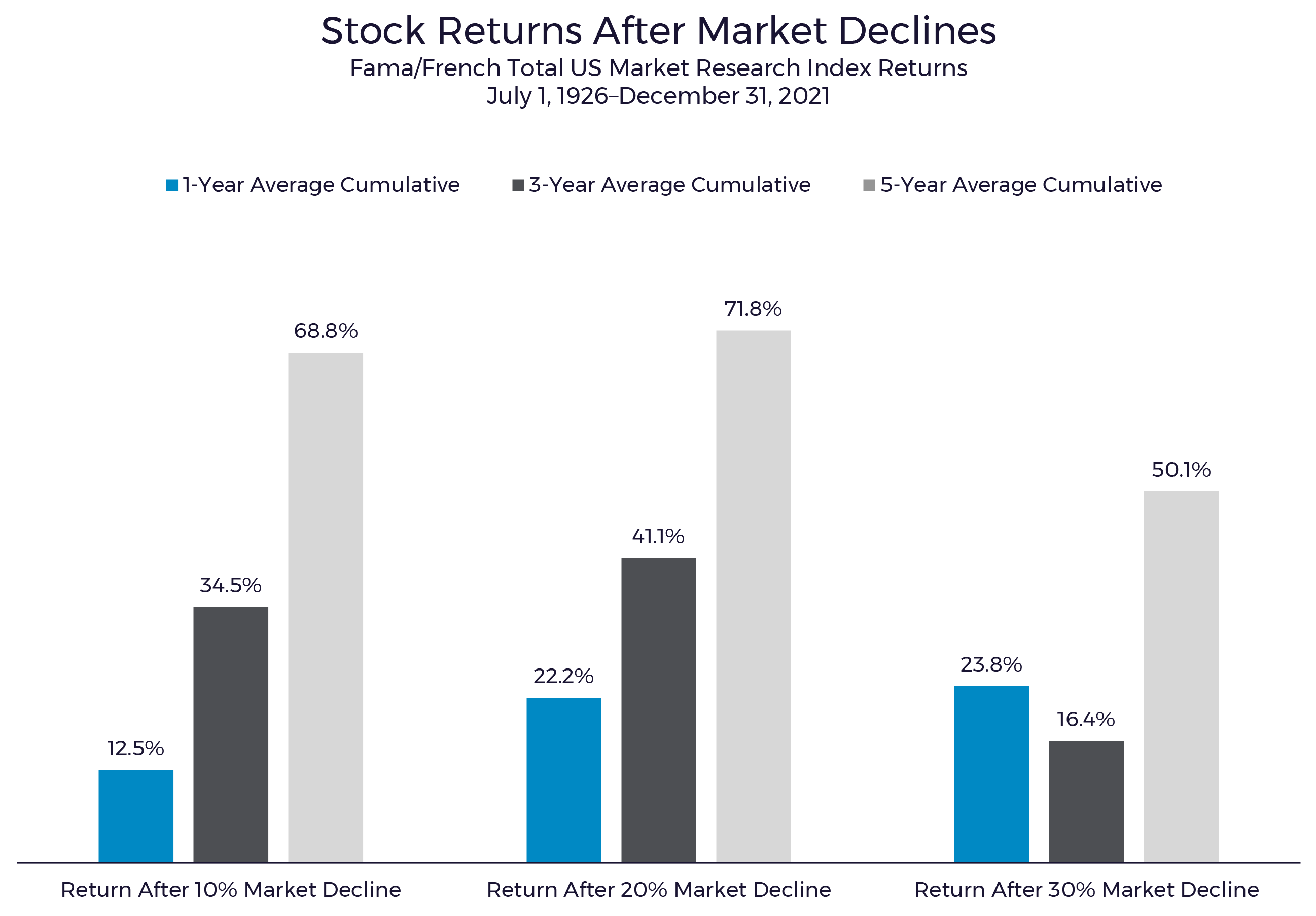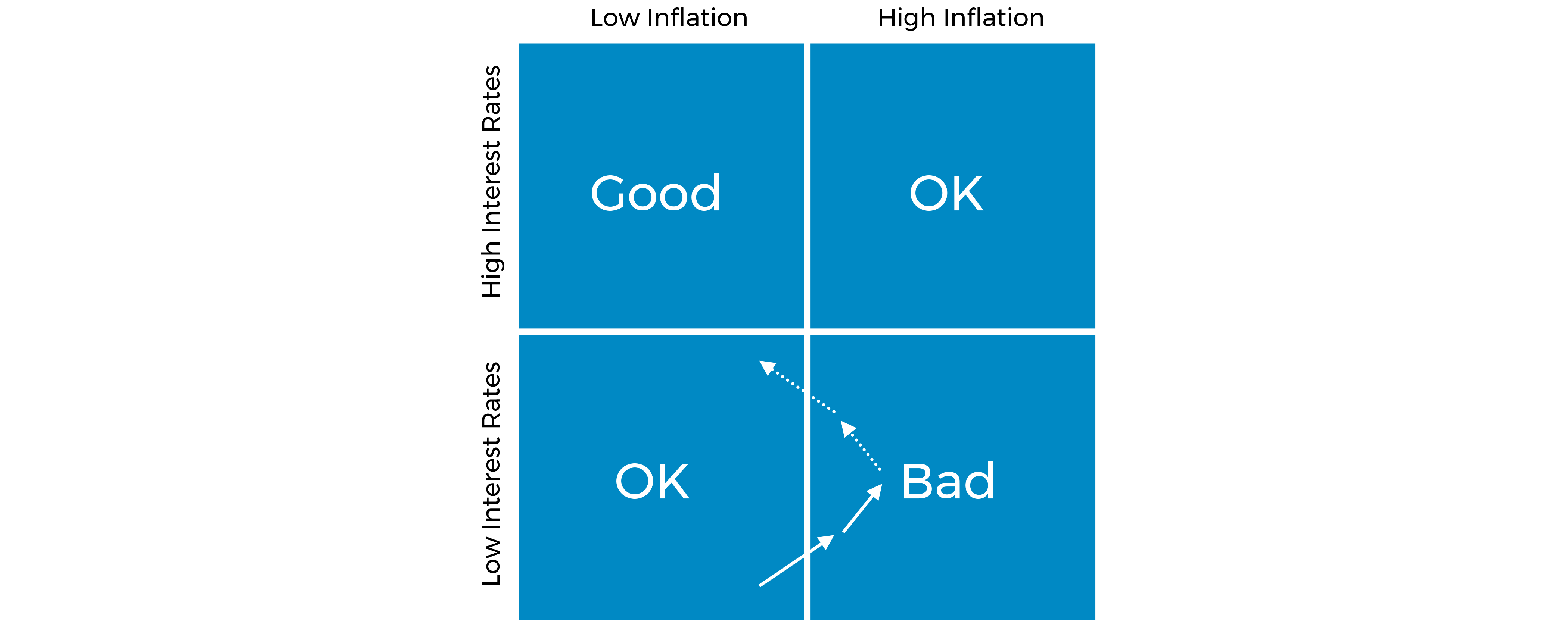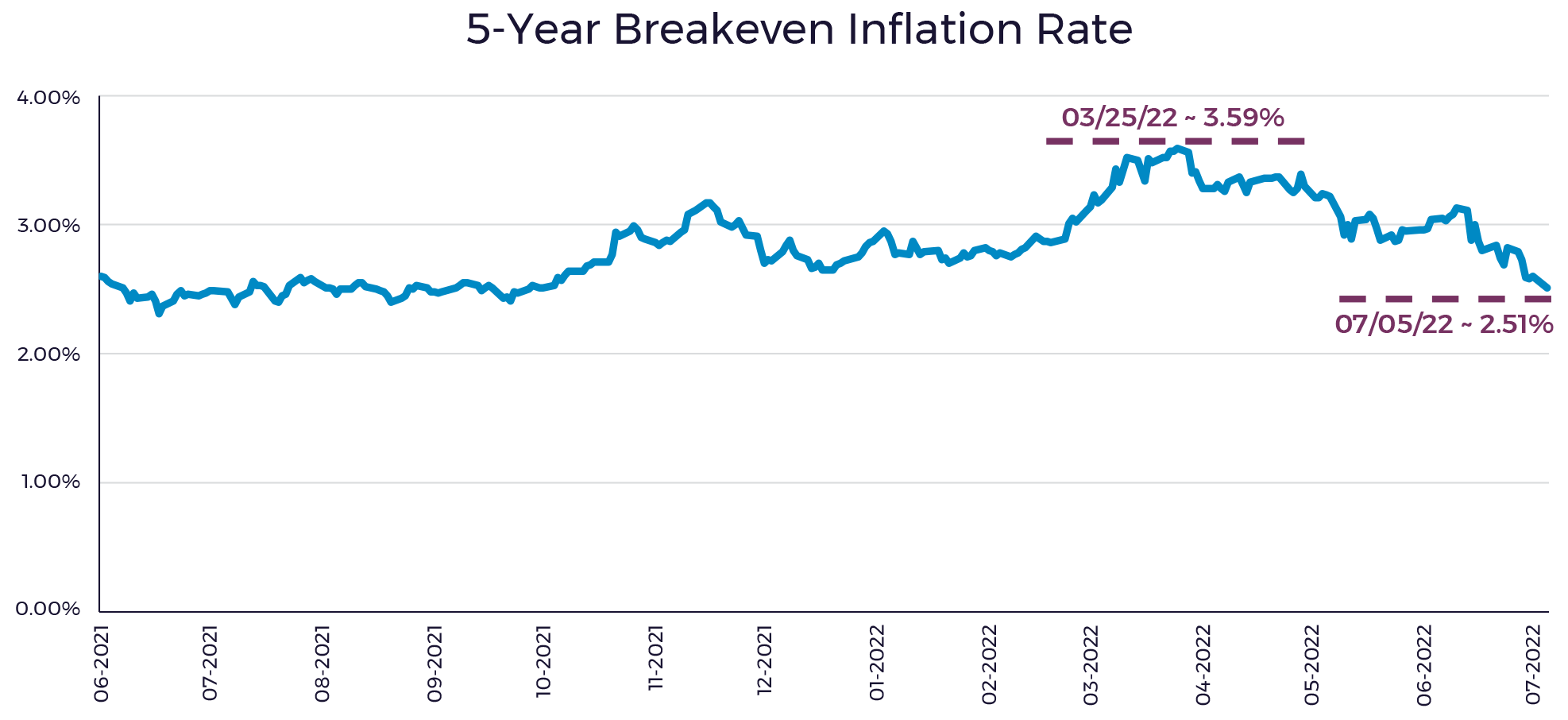It has been a tough first six months of 2022 with an ongoing pandemic, a war overseas and inflation of prices of basic goods like groceries and gas. With this overhang, and the decline in prices of stocks and bonds in the first half of the year, it is a particularly tough time to invest for many people. Stock investing is, at its core, an optimistic endeavor. Stock markets also reward investors more for remaining optimistic in tough times than those who are fair-weather optimists.
Having a financial plan in place can help us focus our optimism on the long term. It helps ask the question, do I think prices will be higher in 20 years than they are today? (Or you can insert your own mental timeframe, as long as it is measured in decades.) It can also focus our activity on what we can control — investment strategy, career milestones, lifestyle spending and the personal well-being of yourself and your loved ones. What we do know is that capital markets deliver in the long run but in the short term many things can and do happen in the markets.
Short-Term Stock Returns Are Very Unpredictable
Without risk in the financial markets, there would not be a financial return. We discussed this in our June post: What Is Unusual About These Markets? In that post, we included a chart from Dimensional Fund Advisors that makes the point that it is difficult to predict market returns and how much missing out can sting. Further, if you invested $1,000 in the S&P 500 Index continuously from the beginning of 1990 through the end of 2020, you would have $20,451. If you missed the single best day, you would only have $18,329 — and only $12,917 if you missed the best five days.

The Silver Lining Is That Value Investing Has Lost Less
Through the first six months of 2022, value stocks have outperformed growth stocks by 15%. That outperformance is the difference in return for the Russell 3000 Value Index of -13.15% and the return for the Russell 3000 Growth Index of -28.15%. There have been far more extreme losses by the high-flying technology stocks like those commonly referred to as FAANG stocks, which lost on average (41.3%) year to date as of June 30, 2022.

In a recent article from David Booth, executive chairman and founder of Dimensional Fund Advisors, titled So What’s Your Plan for the Bear Market?, he wrote, “If you find yourself tempted to make a change, think carefully about whether you’re moving from one long-term plan to the next long-term plan. Trying to time short-term moves has more in common with gambling than with long-term investing plans.” We think he did a nice job of summing up how investment changes should be made — they should be made because we want to change our allocation for the long term, not because recent events make us more worried (or more bullish) than we felt last year.
Where Is Inflation, Where Is It Going, And Why I Should or Should Not Care?
The below chart shows a solid line representing where we have gone from about 2% annual headline inflation up to 8.6% annual headline inflation in the latest CPI release. The dotted line in the chart tracks what the market expects for inflation going forward based on long-term Treasury and TIPs bond yields (5-year expectations are currently about 2.4%). Recent realized inflation has been greater than the interest rates on bonds. If this persisted long term, it would cause investors to lose purchasing power over time. Holding cash or commodities would not be a better choice and would lead to the same problems.
The good news in the chart below is that the dotted line shows roughly where markets expect us to be in a year or two from now. Markets expect inflation to come back down over the next 24 months to a little below historical averages and interest rates to rise to and then remain a little below historically average levels. This means bonds are expected to provide above-inflation returns from a long-term perspective. The message here is that you should stay invested in bonds and keep longer-duration bonds in your portfolio. The best bet for exceeding inflation is to invest in stocks, but bonds are expected to have positive returns net of inflation as well long term.

In terms of where current inflation expectations are in the market, forward-looking 5-year expectations have actually come down from its previous high a few months ago. This is counter to most headlines about year-over-year inflation being very high because those headlines are based on backward-looking data points and lagging economic indicators.

“5-Year Breakeven Inflation Rate (T5YIE).” Retrieved from FRED, Federal Reserve Bank of St. Louis.
A Comment About the Risk of Stagflation
Stagflation was coined as a term by a British politician in the late 1960s to describe a period of simultaneously high inflation with stagnation of the economy. The United States has only experienced stagflation materially one time, in the early 1970s. That period is most remembered for its high oil prices, abnormally high interest rates and price controls. Today’s high oil prices have people drawing comparisons. In reality, the level of interest rates anticipated by markets are not expected to get anywhere close to the levels reached in the 1970s and 1980s. With the anticipated increases to the federal funds rate over the next year, rates are expected to level out around 3%–4%, which most people would view as very reasonable.
There are still lessons we can learn from the 1970s — in particular, the stock market investors who remained invested when the S&P 500 Index had –15% and –26% returns in 1973 and 1974 were rewarded with a cumulative +99% return over the following 5 years. Once again, investors who stayed invested during those tough economic times were rewarded. And often those rewards come well before the economic storm clouds have cleared.
History tells us that our approach toward financial planning and investing must remain disciplined and diversified, certainly in times like these and those similar to market corrections experienced in early 2020. No matter what the future looks like, investors will benefit by maintaining a long-term plan and process. Your financial plan and portfolio bake in the chances of experiencing market dips. We recognize that the start to this year has been unsettling, and we appreciate your confidence in us to help you achieve your financial objectives and goals.
By clicking on a third-party link, you will leave the Forum website. Forum is linking to this third-party site to share information in a different format and is for informational purposes only. However, Forum cannot attest to the accuracy of information provided by this site or any other linked site. Forum does not endorse the site sponsors or the information or products presented there. Privacy and security policies may differ from those practiced by Forum.





